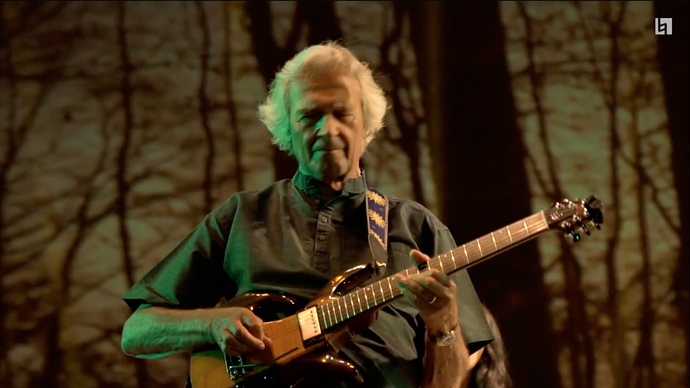Your problem here is these techniques don’t work with 64-bit phrases, only 16-bit. Anything past the SNES, and we’re in the dark about how to play that stuff.
Great clips! Thanks for posting. The stuff you’re trying to do here really is next-level in terms of the purely pattern-based phrases that a lot us grew up with, so the first thing you should do is pat yourself on the back with how far you’ve come in playing the purportedly unplayable. The wrist-based approach you’re using is well suited for this kind of thing, so you’re on the right track. In general, the form you want for this is lightly supinated and moving a little more in the ulnar range of motion than what you’ve got going on here.
Regarding arm position, when you see the arm wiggling, you’re sort of flip-flopping between two very similar arm positions. Instead, you can just stick with one of them, and it’s the one you’re using when you play the individual downstroke on the higher string. So you might feel like you’re resting a little more on the thumb side than you’re currently starting with. If you place your arm in that position, then you won’t have to wiggle around as much because you’ll already be where you need to be for both upstroke and downstroke string changes.
The second thing is range of motion. When you do the downstroke on the higher string, and the pick has played the note on that string and is at the furthest extent of its motion, this is the way your wrist should look:
That single note is the only note you’re playing on that string, and it might feel a little farther away from you than the notes you’re playing on the lower string. The way you reach that far away note is by feeling the wrist bend further in the ulnar direction. So you’re not really reaching down toward the floor, or toward the top string, you’re reaching more toward the bridge. And you’re doing it just by bending the wrist more in that direction. In other words, not by moving the arm around, or using fingers, but simply by going more “bridge-ward” with the wrist joint. If you’re doing it right, you’ll be performing an escaped downstroke as you do that. So more bridgeward = more downstroke escape, which will take care of those individual notes on the higher string, or really any time where the downstroke is the last note on the string, regardless of whether it’s one note or many.
Moving in this range of motion will also give you more edge picking. You won’t be as flat on the string as you are currently. So if you’re used to the flat feel, then you may need to convince yourself that the more edge picking feel is correct. Look in a mirror briefly if you have to, to make sure you’re getting the proper ulnar bend on the downstroke. It may look or feel weird to you, but that’s ok. When you have that feeling, get a mental image of that and stop looking in the mirror. That feeling is the correct feeling.
More generally, ironing out these little kinks puts you into the “long tail” of the process, where you try to and work out every kind of picking combination you might encounter in real-world playing. Phrases like the one you are using here are great for this because they are full of variety, and not just the same repeating picking and fretting patterns. This just gives you more opportunities to find all the little pockets of unfamiliarity that you will encounter all the time in real-world playing.
The “long tail” takes anywhere from six months to a couple years to work through, until you’ve found (consciously or otherwise) all the picking and fretting combinations in the kind of music you want to play, figured out how to replicate the correct form, motion, attack, hand sync, etc. on all of them, and they have become second nature. During this time, feeding the process with a wide variety of musical phrases is where you want to be. Try not to stress out about “roadblocks” and specific things that are not working. Instead, just notice the things that are working. When you do stuff that clicks, feels smooth and accurate, and sounds good, do more of those.

 .
.

